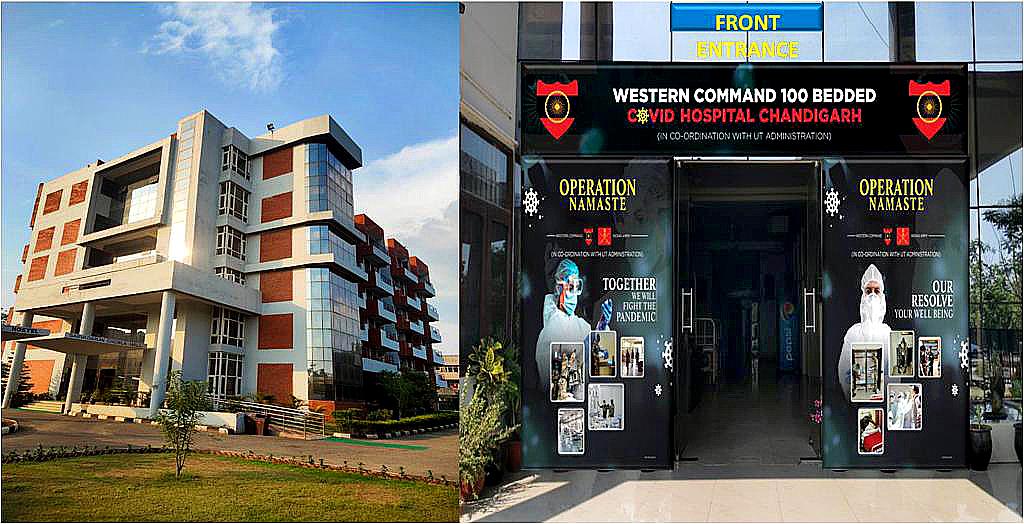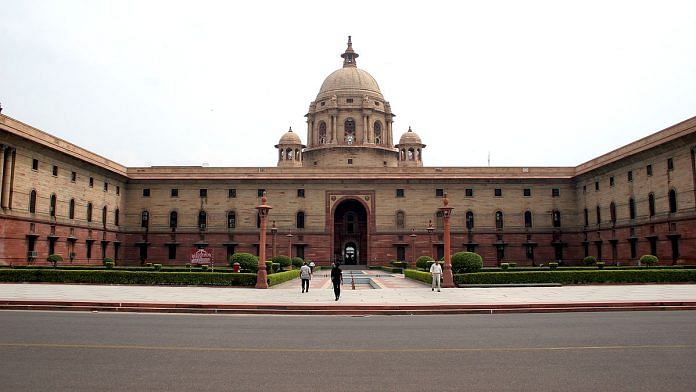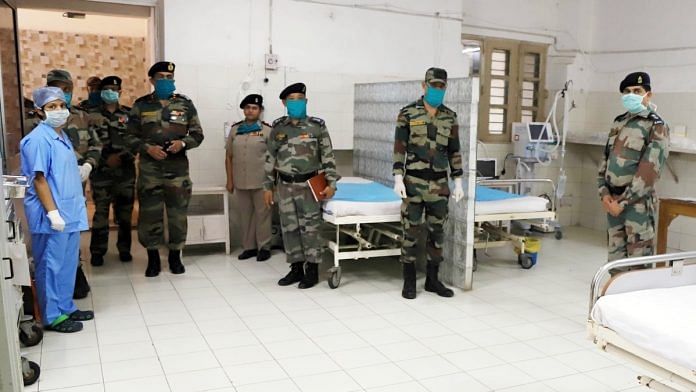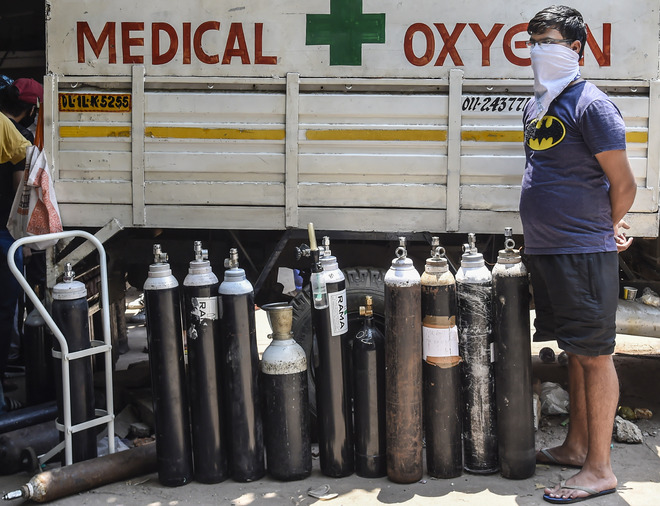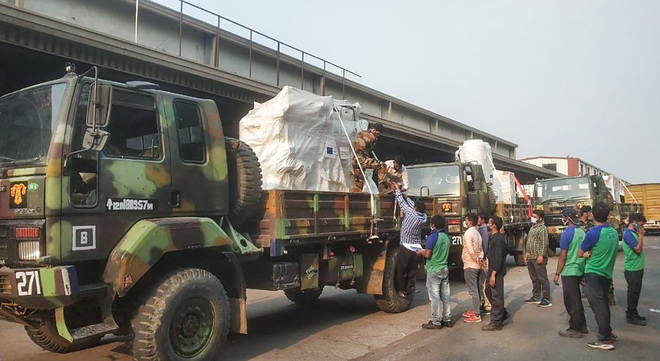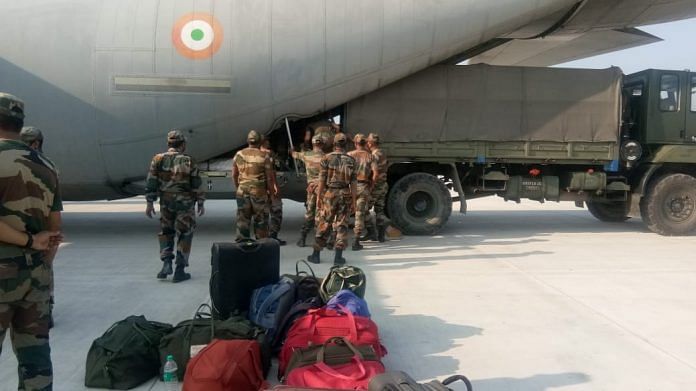
New Delhi: As the country faces one of the worst healthcare crises in several decades, the armed forces’ Medical Corps finds itself stretched as it swings between the increasing demand from the civilian side as well as its own, ThePrint has learnt.
The latest demand has come in from the Delhi Deputy Chief Minister Manish Sisodia who has written to Defence Minister Rajnath Singh calling for the Army to set up 11,000 beds, including 1,000 ICU ones, in the national capital. https://efd128da917c28d59815f1eb16d86cbe.safeframe.googlesyndication.com/safeframe/1-0-38/html/container.html
Many within the defence and security establishment are now wondering from where they would source doctors, nurses and paramedics to cater to so many beds.
“A number of ad hoc hospitals have been set up across the country to provide succour to fellow citizens,” a source said. “A large number of men and women of the Armed Forces Medical Services are manning these facilities.”
The military’s medical staff is stretched thin due to continuous demands to create medical infrastructure and provide army doctors to man them, the source added.
Explaining the manpower needed, the source said that the 500-bed Sardar Vallabh Bhai Patel Covid Hospital near the New Delhi Airport has a mix of ICU and HDU beds but consistently, the bed occupancy ranges from 98-100 per cent.
According to the source, 122 medical officers, 48 nursing officers and 120 paramedical staff from the Army, Navy and Air Force have been stationed in the hospital.
The source said the doctors are drawn in from various units including the premier Army Research and Referral Super Speciality Hospital, where some of these doctors cater to critical patients such as those suffering from cancer and other ailments including kidney failure.
“These doctors not only tend to the ones at the makeshift hospital but also have to observe their own patients back at the R&R behind the screen,” a second source said.
Also read: Soldiers sit tight in Ladakh amid India’s Covid crisis, but construction activity continues
Military care in the state
The Dhanvantri Covid Care Hospital in Ahmedabad was the second such facility, after the Sardar Vallabh Bhai Patel Covid Hospital, made functional with the help of the Armed Forces Medical Services. It is working with support from the state machinery.
Over 200 seriously ill patients, who have tested Covid positive, are being treated here. The ICU in this hospital is almost ready and is expected to start working soon.
A contingent of about 70 healthcare personnel from the three services have been moved from various parts of the country and are deployed in Ahmedabad, the second source said.
Similar hospitals are in the process of being set up at Lucknow and Varanasi and will open shortly.
The armed forces have already earmarked a contingent of 33 doctors, 69 paramedical staff and 34 nursing staff for the hospital at Lucknow, which is expected to be a 450-bed facility.
At Varanasi, the facility will be a 750-bed hospital and is likely to be functional in the next few days.
Moreover, a 500-bed hospital has been established with the support of the armed forces at the ESI Hospital in Bihta, Patna.
A contingent of armed forces medical personnel and paramedics have been deployed here besides that of the state government.
Sources argue that with the government declaring the opening of a 500-bed centre in Jammu, with help from the military, and a number of states demanding the Army’s help to stem the tide, the entire Medical Corps of the armed forces “has been dangerously overstretched”.
Steps taken to ensure more availability of military doctors
A number of measures have been put in place by the armed forces to quickly increase the availability of doctors.
These include recalling medical officers from the frontline as well as those who have been posted with recruiting offices, NCC and on staff appointments.
Medical officers from a particular geographical area are being pooled in to ensure availability. Courses of all doctors have been cancelled and retirements of short service medical officers have been moved ahead to until the end of this year.
To ensure that no doctor is wasted on administrative duties, quarantine centers are being run by non-medical staff while limited paramedics have been handed the job in isolation centers.
Sources said that during the course of duty in these places, a significant amount of medical staff have themselves been infected with Covid-19.
“Even after the reinforcements mentioned above, the medical staff is stretched thin due to ceaseless demands to create medical infrastructure and provide army doctors to man them,” the second source said.
(Edited by Arun Prashanth)
Also read: Tejas aircraft tech comes in aid of oxygen-starved Indian cities. This is how it works








